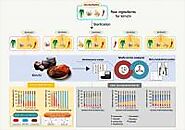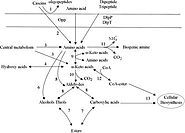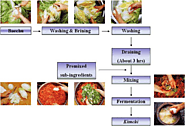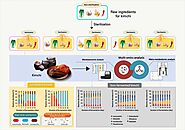-
About
- About Listly
- Community & Support
- Howto
- Chrome Extension
- Bookmarklet
- WordPress Plugin
- Listly Premium
- Privacy
- Terms
- DMCA Copyright
- © 2010-2025 Boomy Labs

Listly by donelle7-nades
Understanding that all bacteria are not bad; that bacteria more than infectious, disease-causing entities; that bacteria are important components of our microbiomes and the Earth’s microbiome and that we cannot exist without them; and that bacteria are of importance in all aspects of our lives from farming, to food, to chemicals, to biotechnological applications, to medicine and drug discovery, to pharmaceuticals and cosmetic, and the list goes on.

Kimchi is a spicy Korean side dish created from salted, fermented vegetables, usually cabbage and radishes. It gets its unique kick from a paste made of chili powder, garlic, ginger, red pepper and sugar and its recognizable tang from fish sauce.

The bacterium involved in fermentation of Kimchi is lactic acid bacteria, Leuconostoc, Weissella and Lactobacillus. These are believed to be the key players in Kimchi fermentation. Although the fermentation is gradually dominated by lactic acid bacteria shown in the image above.

Identification of the origin source and the fermentation characteristics of lactic acid bacteria responsible for kimchi fermentation

Lactic acid bacteria are a kind of microorganisms that can ferment carbohydrates to produce lactic acid, and are currently widely used in the fermented food industry. Lactic acid bacteria can decompose macromolecular substances in food. On the one hand, they are used to improve the flavor of fermented foods, increase the nutrition of foods, reduce harmful substances, increase shelf life, and so on. On the other hand, they can be used as probiotics to promote health in the body.

Monitoring temperatures to foster the growth of Weissella, Lactobacillus species and other bacteria contributing to the fermentation process is needed.Process involves salting the vegetables to draw out the water that helps in preservation and allows the seasonings to penetrate the food over time,final salt concentration ranges from 2-5%.Kimchi is fermented by wild cultures naturally present on the vegetables.Organic acids such as lactic and acetic acid form.Kimchi ferments at room temperature in 1-2 days.

Lactic acid naturally occurs in certain foods, and it's also used as a food additive. This article explains the health effects of lactic acid in food.

This book provides an overview of the physiological basis of lactic acid bacteria and their applications in minimizing foodborne risks, such as pathogens, heavy metal pollution, biotoxin contamination and food‐based allergies. It also covers the potentials, challenges and opportunities.

Lactic acid bacteria produce various metabolites during fermentation in response to the type of ingredients and storage temperature, and the metabolites determine the flavor and quality of kimchi.
The lactic acid bacteria grow rapidly during the fermentation process and produce lactic acid, which lowers the pH value of the kimchi. The protein in the kimchi is decomposed into free amino acids, and the calcium ions are combined into inorganic salts, which have high nutritional value.